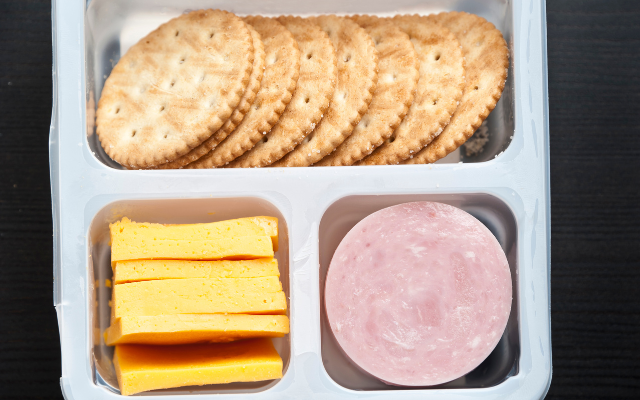Per an article on Linkedin.com, Lunchables were created in 1985 as a response to slowing sales of Oscar Mayer’s bologna. Additionally, the lunch packs were created to help American mothers who said that they lacked time to pack lunches for their kids. Believed to be a somewhat healthy option, new testing data is showing otherwise. Parents may want to rethink what they are packing for their children to eat because according to Consumer Reports, Lunchables have concerning levels of lead and sodium.
The prepackaged lunch kits have evolved beyond simple crackers, meats, and cheeses to become comprehensive meals, even including beverages and desserts. The advocacy group examined Lunchables, which now fall under the Kraft Heinz umbrella, comparing lunch and snack kits not only from them, but from other brands as well. Red flags are being raised and concerning data is coming to light about these long-standing popular products.
“There’s a lot to be concerned about in these kits,” Amy Keating, a wp-signup.phped dietitian at CR said in a recent interview with CBSNews.com. “They’re highly processed, and regularly eating processed meat, a main ingredient in many of these products, has been linked to increased risk of some cancers.”
Eric Boring, a CR chemist who led the testing told the news outlet that, “The kits provide only about 15% of the 1,600 daily calories that a typical 8-year-old requires, but that small amount of food puts them fairly close to the daily maximum limit for lead. So if a child gets more than half of the daily limit for lead from so few calories, there’s little room for potential exposure from other foods, drinking water or the environment.”
He added, “We don’t think anybody should regularly eat these products, and they definitely shouldn’t be considered a healthy school lunch.”
So, just how much sodium and lead was found during testing?
Well, according to the findings, per CBS News, a 3.2-ounce Turkey and Cheddar Cracker Stackers Lunchables held 74% of California’s level allowed for lead, and 49% of the daily recommended sodium for 4- to 8-year-old snackers. Other products that the agency tested were found to contain lesser amounts of both lead and sodium than the Lunchables.
In response to these findings, Consumer Reports has circulated a petition to have the product removed from the federal program that provides low-cost or free meals to kids on school days. The petition has topped over 16K signatures and counting.
And of course, Kraft Heinz is defending their product.
“Many of our Lunchables products are a good source of protein, offering nutrients through meats and cheeses. We’ve taken great steps to improve the nutrition profile of Lunchables, including recently unveiling Lunchables with Fresh Fruit, in partnership with Fresh Del Monte, and reducing the sodium in all Lunchables crackers by 26%,” a Kraft Heinz spokesperson said in an email statement.
“According to current science, processed foods arbitrarily classified as ‘ultra-processed’ are not necessarily less nutritious. In fact, many processed foods contain added nutrients, providing even more benefits to the consumer. The classification of foods should be based on scientific evidence that includes an assessment of the nutritional value of the whole product, not restricted to one element such as a single ingredient or the level of processing,” the spokesperson concluded.
Photo: Lunchables Instagram; Canva.com







